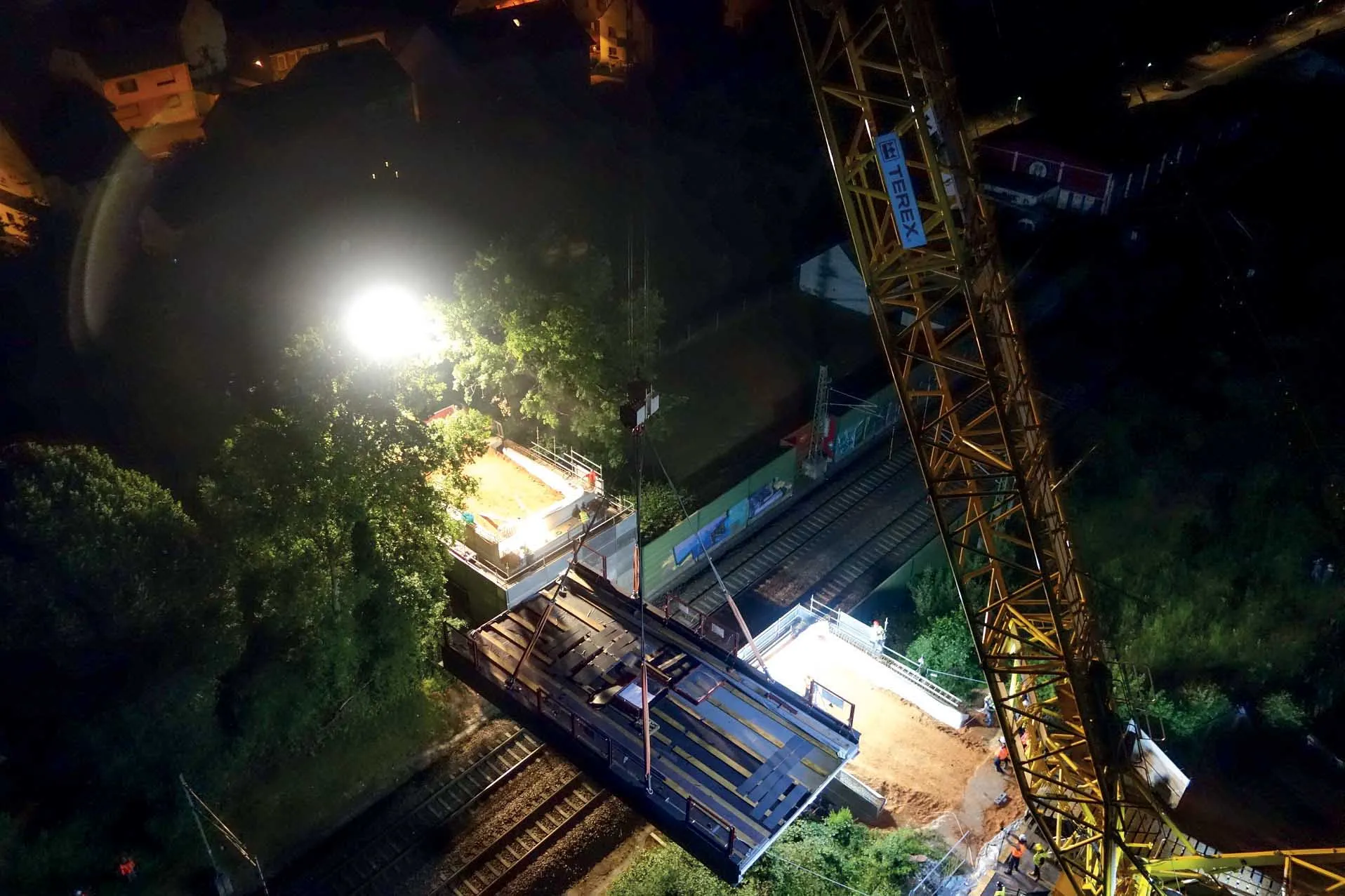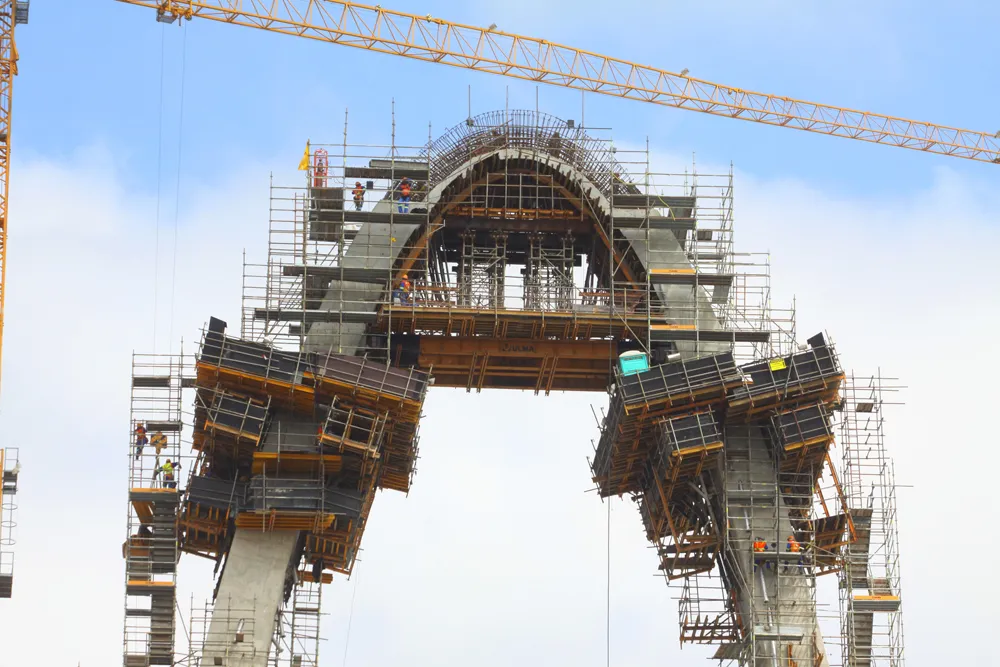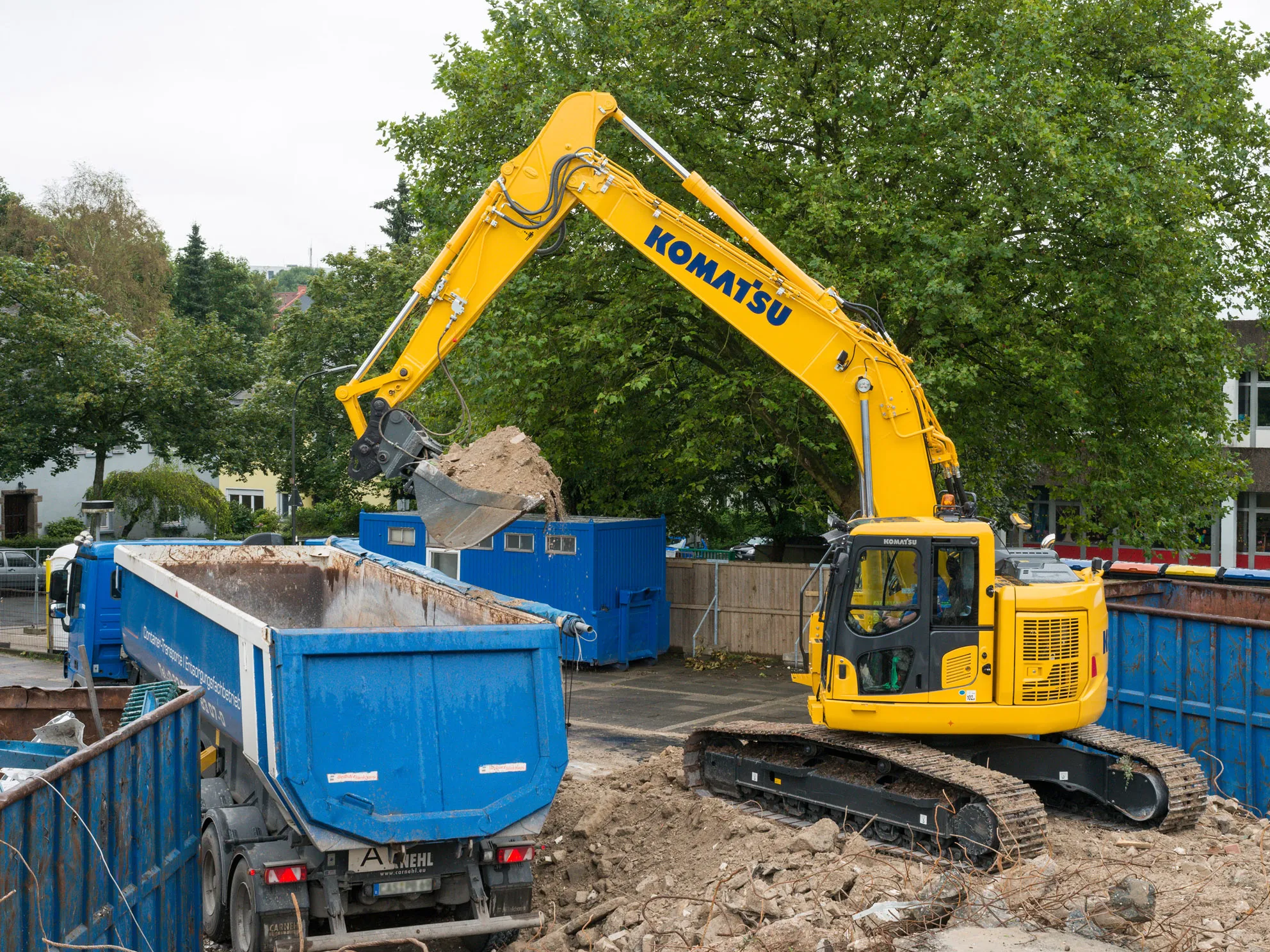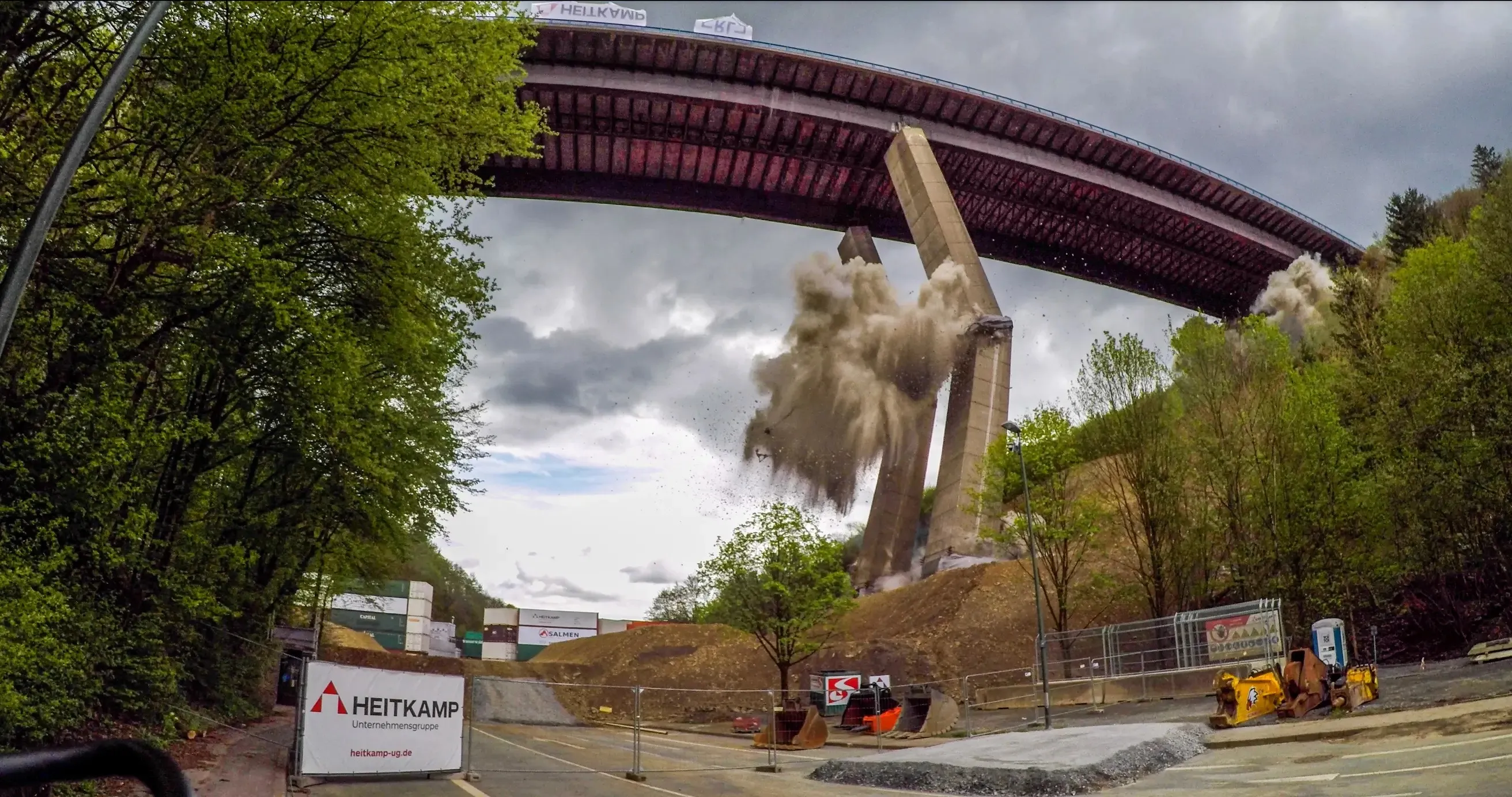The new 15m-long, 66tonne Schöneck bridge was recently installed in Germany’s Saarland municipality of Kirkel. Trier-based Steil Kranarbeiten used its Terex Superlift 3800 lattice boom crawler crane to complete the project.
Two months before, the old 1960s bridge, not then in use, was cut into eight sections and lifted out using a Terex AC 350/6 all-terrain crane. “Since both the old and the new bridges cross over the Intercity-Express Paris-Mannheim electric train route, overhead lines had to be disconn
January 4, 2016
Read time: 2 mins

The new 15m-long, 66tonne Schöneck bridge was recently installed in Germany’s Saarland municipality of Kirkel. Trier-based Steil Kranarbeiten used its 1222 Terex Superlift 3800 lattice boom crawler crane to complete the project.
Two months before, the old 1960s bridge, not then in use, was cut into eight sections and lifted out using a Terex AC 350/6 all-terrain crane. “Since both the old and the new bridges cross over the Intercity-Express Paris-Mannheim electric train route, overhead lines had to be disconnected before the lifts were done. To avoid disruption to the train service, we had a window of only a few hours in both cases,” said Martin Mittler, one of the Steil managers for the project.
The work site was also in a residential area, a tight space for the 19 trucks delivering the Superlift 3800 crane’s components on site and setting it up with the Terex assist crane.
“The modular quick-connect system makes it possible to split the crane’s basic structure into two parts, one reason why the Superlift was chosen,” said Mittler. It was set up in two days in an LH1 configuration with a 42m main boom, 205tonnes of superstructure counterweight and 50tonnes of central ballast. The unstable working area for the crane had to be prepared with red ironwood crane mats to bear the machine’s weight.
The bridge structure was delivered in two sections and welded on-site, weighing in total 70tonnes, including slinging gear. After the load was meticulously rigged for balance, power to the overhead lines was turned off and the lift started.
The operator lifted the bridge, which was rigged at four attachment points, to a height of 6m at a working radius of 26m, in order to swing it over the tracks.
The working radius was increased to around 30m by lowering the boom and moving it forward with the Superlift by about 1m. The bridge was set down on supports with laser-like precision.
The tail end of the lift also went smoothly. Then, in just ten hours, the Superlift 3800 was disassembled and ready to truck to its next job.
Two months before, the old 1960s bridge, not then in use, was cut into eight sections and lifted out using a Terex AC 350/6 all-terrain crane. “Since both the old and the new bridges cross over the Intercity-Express Paris-Mannheim electric train route, overhead lines had to be disconnected before the lifts were done. To avoid disruption to the train service, we had a window of only a few hours in both cases,” said Martin Mittler, one of the Steil managers for the project.
The work site was also in a residential area, a tight space for the 19 trucks delivering the Superlift 3800 crane’s components on site and setting it up with the Terex assist crane.
“The modular quick-connect system makes it possible to split the crane’s basic structure into two parts, one reason why the Superlift was chosen,” said Mittler. It was set up in two days in an LH1 configuration with a 42m main boom, 205tonnes of superstructure counterweight and 50tonnes of central ballast. The unstable working area for the crane had to be prepared with red ironwood crane mats to bear the machine’s weight.
The bridge structure was delivered in two sections and welded on-site, weighing in total 70tonnes, including slinging gear. After the load was meticulously rigged for balance, power to the overhead lines was turned off and the lift started.
The operator lifted the bridge, which was rigged at four attachment points, to a height of 6m at a working radius of 26m, in order to swing it over the tracks.
The working radius was increased to around 30m by lowering the boom and moving it forward with the Superlift by about 1m. The bridge was set down on supports with laser-like precision.
The tail end of the lift also went smoothly. Then, in just ten hours, the Superlift 3800 was disassembled and ready to truck to its next job.









